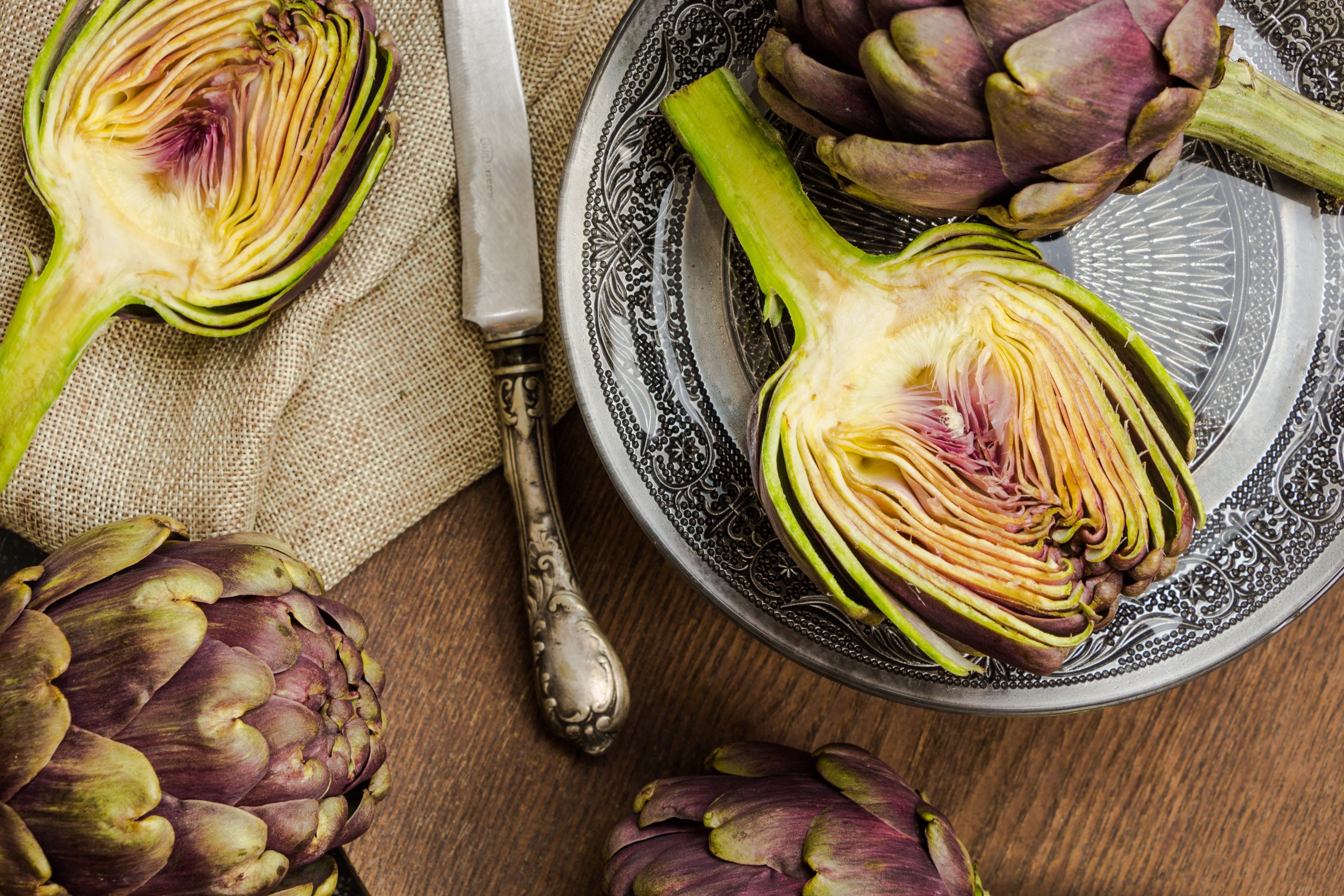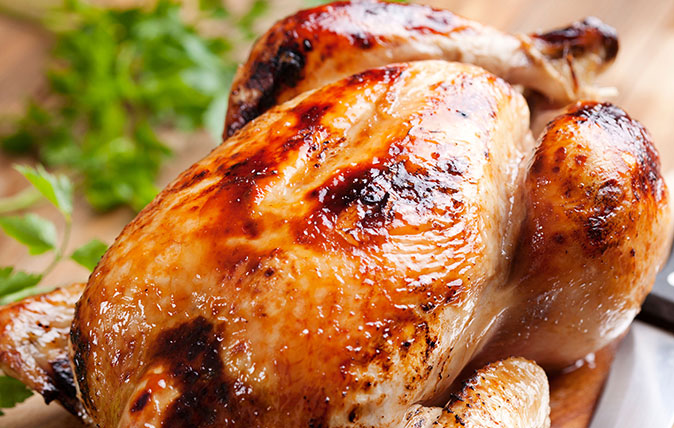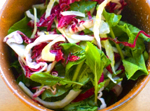How to make Tom Parker Bowles's pasta with artichokes and pecorino
Don’t be put off by the effort it takes to prepare and eat a globe artichoke, says Tom Parker Bowles, for the languid pleasure of pulling off its petals is worth the wait.


Some of the finest ingredients don’t so much require your attention as demand it. Take the sea urchin, for example. Hidden within that treacherous carapace is a nugget of sweetly lascivious delight — the art of reaching that nugget lies in avoiding those spikes. Dismantling a crab necessitates a mixture of nimble dexterity and brute force, likewise oysters, which make you toil to reveal their gently wobbling treasure.
The globe artichoke, however, requires a whole different set of skills, a slow, systematic undressing — the foreplay, if you will, to the main event.
‘The eater must be equipped with front teeth and patience,’ notes The Oxford Companion to Food and the process of removing those bracts (the petal-like leaves) is as delectable as it is tantalising.
It’s all about ‘the languid pleasure of pulling off its petals one by one with lingering teeth, voluptuously creaming them of those velvety pads of blandly melting waxen manna,’ enthused the late food writer P. Morton Shand, who was most definitely a fan.
And although your hard work is very much rewarded, there is no escaping the fact that this is a thistle you’re dealing with, however improved it may be, and that just soft bottom is fiercely protected.
By the time you carefully slice away any trace of that hairy choke, ‘so the heart emerges virginal of a single cellulose tress as a lady’s newly shaven nape,’ in the sighing words of Shand, the greedy anticipation is almost overwhelming.
You can see exactly why the globe artichoke (not to be confused with the Jerusalem artichoke, which is actually a knobbly tuber) was long considered to be an aphrodisiac.
Sign up for the Country Life Newsletter
Exquisite houses, the beauty of Nature, and how to get the most from your life, straight to your inbox.
When the disrobing is over, the real fun begins. So evocative is the entire ritual that it has even inspired an Italian expression, la politica del carciofo, or the art of dealing with opponents, one by one.
And it’s the Italians who are masters of what John Evelyn called the ‘noble thistle’, eating them whole when very young. Thinly sliced and raw, anointed with olive oil and a lusty squeeze of lemon juice. Or deep fried, in carciofi alla giudia. A Roman classic, as when prepared alla Romana, stuffed with mint and garlic and braised until soft. For the artichoke aficionado, there’s no better place to be than Rome in spring’s first bloom.
The French aren’t exactly slackers, either. Fonds d’artichauts à la Niçoise sees the hollow of the cup filled with sweet buttered peas and, in the Pyrenees, the hearts are cooked in a gratin with potatoes and cream. Talking of cream, I once ate a version in New Orleans that was stuffed with oysters, garlic, cayenne pepper and litres of the stuff. Subtle, it wasn’t — but then the creole food of that great city rarely is.
For me, simple is always best. Steamed for 20 minutes or so (adding a sliced lemon, a couple of bay leaves and a scattering of whole black peppercorns to the water)— until the leaves come away easily from the stem—and served hot with melted butter or cold with a sharp vinaigrette. Nowhere does the latter better than Hereford Road in London, W2, where the simplicity of the menu belies the skill of the cooking. This recipe comes from Rachel Roddy, who writes so lyrically about Italian food. I particularly adore her first book, Five Quarters: Recipes and Notes from a Kitchen in Rome.
Pasta with artichokes and pecorino
Serves 4
Ingredients
- 4 large artichokes
- 1 lemon
- 1 onion, peeled and sliced
- 6tbspn olive oil, plus more for frying the garnish
- 1 clove garlic, peeled and finely diced
- White wine
- Salt
- Black pepper
- 400g pasta (casarecce, fusilli or penne)
- 50g pecorino, grated
Method
Trim the artichokes by pulling the tougher outer leaves downwards and snapping them off just below the base. Then, using a sharp knife, pare away the tough green flesh from the base of the artichoke and stem. As you work, rub the artichoke with lemon.
Cut three of the artichokes into eight wedges, then sit the wedges and the remaining whole one in a bowl of water with some lemon juice squeezed in.
Bring a large pan of water to a boil for the pasta. In a large, deep frying pan or saucepan with a lid, fry the onion in the olive oil until soft and translucent. Add the garlic, stir, then add the drained artichoke wedges, a pinch of salt and stir until all the wedges glisten.
Add a glass of white wine, cover the pan and cook, covered, over a low flame for 30 minutes, or until the artichokes are tender. If the pan looks dry, add a little more wine or water.
Remove half the artichokes from the pan, blend to a cream, then return to the pan. Add salt, if needed, and a few grinds of black pepper.
Slice the remaining artichoke into thin slices and fry in olive oil until deep gold and crisp. Lift out with a slotted spoon and blot on kitchen towel.
Add salt to the boiling water, stir, then add the pasta and cook until al dente. Once the pasta is cooked, drain the pan, saving some of the cooking water. Tip the pasta into the artichoke-cream pan, add half the pecorino, a slosh of pasta cooking water and toss everything together.
Divide between bowls and top each portion with the remaining pecorino and a scattering of fried artichokes.

Credit: Alamy
Greatest recipes ever: Simon Hopkinson’s Roast Chicken
Fergus Henderson chooses Simon Hopkinson’s roast chicken as one of this greatest recipes ever.

Greatest recipes ever: The River Café’s crab, fennel, tomato, radicchio
Thomasina Miers picks The River Café’s crab, fennel, tomato, radicchio as one of her greatest recipes ever

Tom Parker Bowles' five favourite cocktails
As far as Tom Parker Bowles is concerned, there are only five true cocktails – and none of them come with
Tom Parker Bowles is food writer, critic and regular contributor to Country Life.
-
 Six rural properties with space, charm and endless views, as seen in Country Life
Six rural properties with space, charm and endless views, as seen in Country LifeWe take a look at some of the best houses to come to the market via Country Life in the past week.
By Toby Keel
-
 Exploring the countryside is essential for our wellbeing, but Right to Roam is going backwards
Exploring the countryside is essential for our wellbeing, but Right to Roam is going backwardsCampaigners in England often point to Scotland as an example of how brilliantly Right to Roam works, but it's not all it's cracked up to be, says Patrick Galbraith.
By Patrick Galbraith